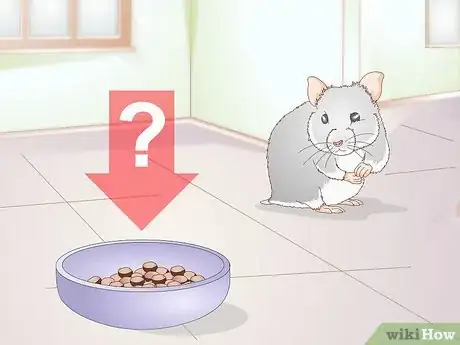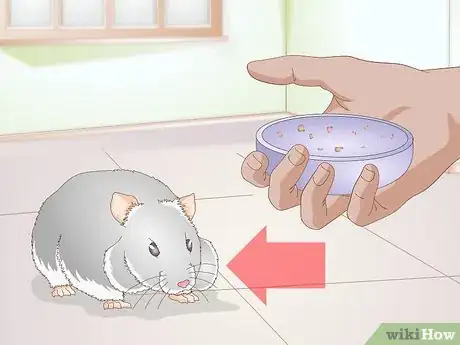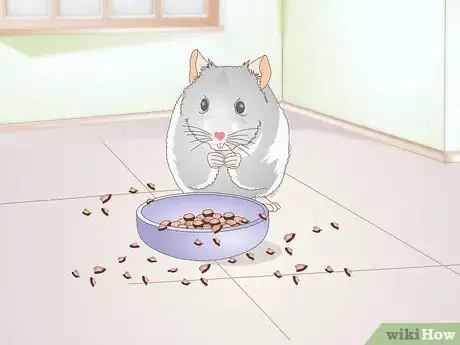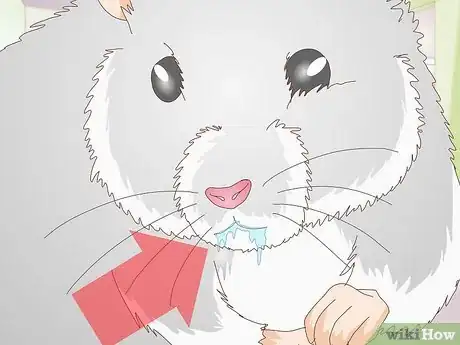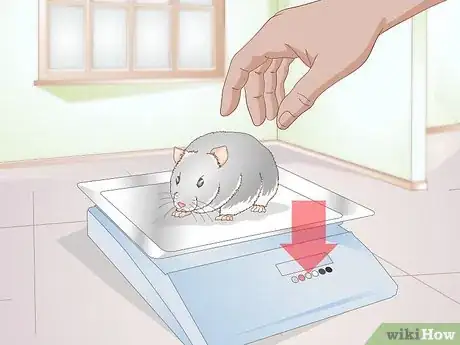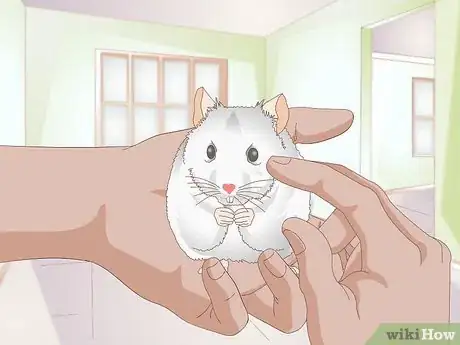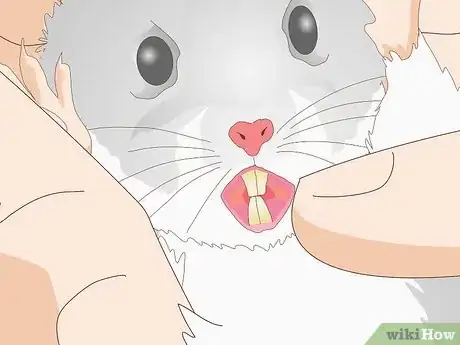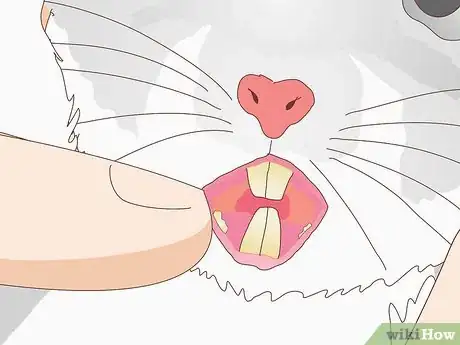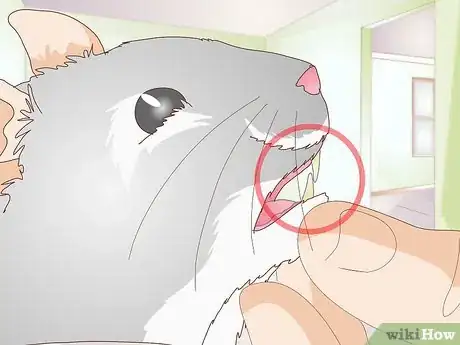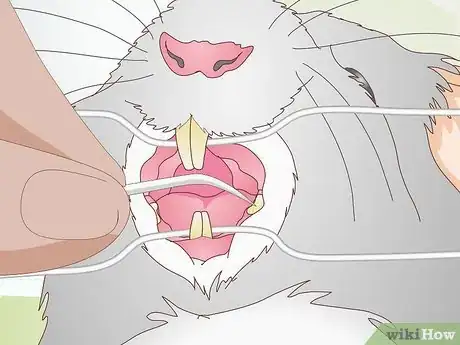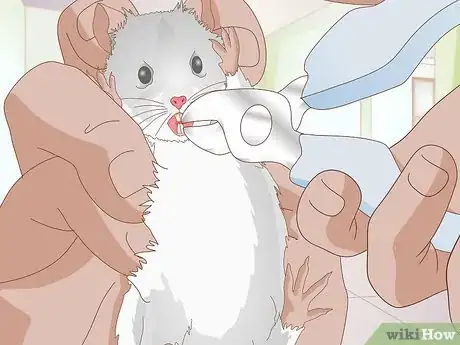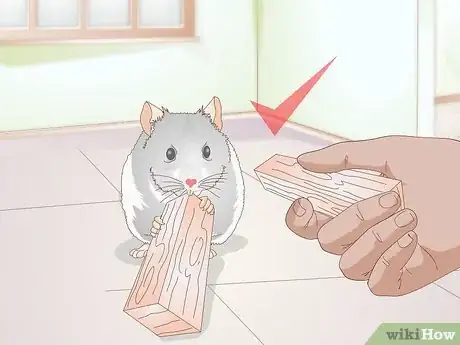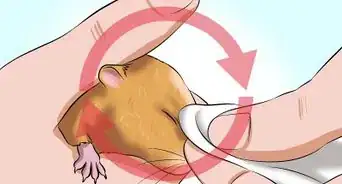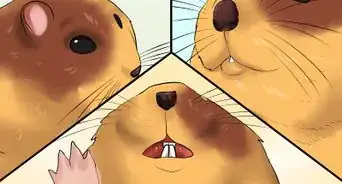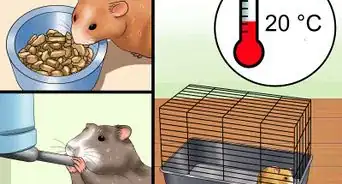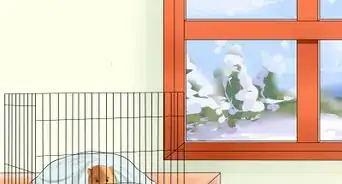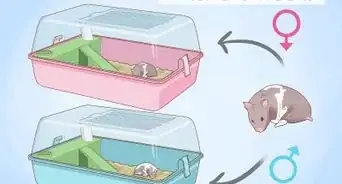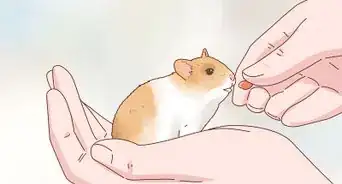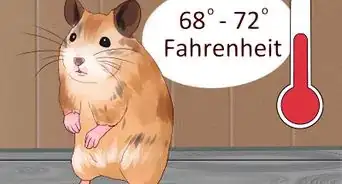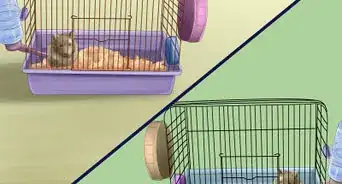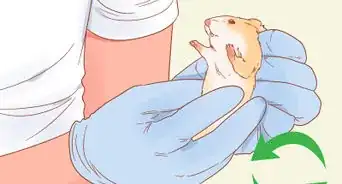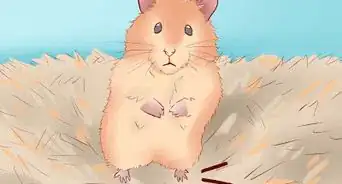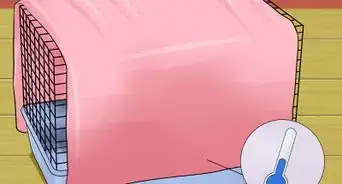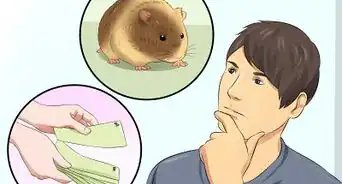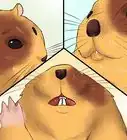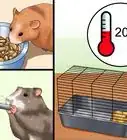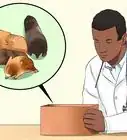This article was co-authored by Pippa Elliott, MRCVS. Dr. Elliott, BVMS, MRCVS is a veterinarian with over 30 years of experience in veterinary surgery and companion animal practice. She graduated from the University of Glasgow in 1987 with a degree in veterinary medicine and surgery. She has worked at the same animal clinic in her hometown for over 20 years.
This article has been viewed 23,908 times.
Hamsters are popular as pets for children, as they are engaging, easy to care for, and relatively free from health problems. However, one problem that hamsters may suffer from is tooth problems. This is because a hamster's teeth grow continually and the rate of growth is only balanced by the rate at which the teeth are worn down. If the hamster isn't given the opportunity to chew on wood or an appropriate diet that wears the teeth down, then the rate of growth means the teeth elongate and begin to have problems.
Steps
Identifying Dental Problems
-
1Look for signs your hamster isn't eating. Overgrown teeth make it difficult for the hamster to eat. This is because the long teeth force the jaws permanently apart, the long teeth grow into the roof of the mouth or pierce the lips, or the teeth develop sharp jagged edges that make eating painful.[1]
- If your hamster's food is not disappearing like it usually does, then it may not be eating due to dental problems.
-
2Don't assume food that disappears has been eaten. Since your hamster can store food in its pouch, don't take the disappearance of food from the bowl as absolute evidence it is eating. It is not unusual for hungry hamsters that are struggling to eat, to pack their pouches or else hide food in their bed.Advertisement
-
3Pay attention to signs that your hamster is having difficulty eating or making a mess. If the hamster is trying to eat but having a hard time, it will probably spill food all over the place. So, if your hamster is being messier than usual, you should begin to suspect that they are having an issue.
-
4Notice excessive drool. Take a look at your hamster for signs of saliva staining around the mouth or down its chin. Long teeth can make it difficult to swallow properly. They also cause pain, which makes the hamster drool heavily.
-
5Look for weight loss. If you suspect your hamster isn't eating, then try to determine if it is losing weight. It can be hard to assess a hamster's weight, especially with its fluffy fur, but if you think it is losing weight, that can be a symptom of dental problems.
-
6Inspect your hamster's head for abscesses or a foul odor. Infected teeth can cause accesses to form in and around the mouth. This will cause the region to swell, which should look different from when your hamster packs its cheeks with food.
- The area may smell badly as well, as infections, such as abscesses, tend to emit a foul odor.
Checking a Hamster's Teeth
-
1Look at the front teeth. It is the incisors, located at the front of the mouth, which most commonly overgrow. These can be seen with the naked eye at home. To check the incisor teeth, gently grasp the hamster's scruff so that its lips are drawn back in a "smile."[2]
- However, take care when handling the hamster not to get bitten.
- Be aware, that being overly enthusiastic when holding a hamster's scruff can cause its eyes to pop out of the socket. So, if in doubt, have a vet or vet tech show you what to do.
-
2Assess whether the front teeth are too long. The tips of the hamster incisors should meet like two chisel blades coming together. The incisors are curved but you need to make sure they grind against each other. Otherwise, they are at risk of overgrowing.
- Determining if the incisors are too long can be tricky, and requires some experience. As a general rule, imagine whether your hamster is able to open its incisors wide enough to nibble on a peanut. If the gap between the tips of the incisors when its mouth is fully open is not sufficient to pick up a peanut, then the teeth are too long.
- Also, look for malformation. Look for teeth that are angled oddly, such as sticking out to one side. Sometimes, hamsters with really bad teeth even have teeth that are pointing straight into the roof of their mouths.
-
3Decide whether the molars need to be inspected. The molar teeth are more difficult to check out and you may need a trip to the vet to get these checked. However, molar problems are usually the result of problems with the incisors, so if the incisors are fine then the risk of molar overgrowth goes down (but is not eliminated altogether).[3]
- Conversely the hamster with overgrown incisors is at increased risk of molar problems. Thus, if you trim the incisors and the hamster's chin remains wet, then get a vet to check the molars.<
-
4Inspect your hamster's front teeth for genetic dental problems. In addition to having dental problems because the teeth are not worn down, it is not uncommon that hamsters have a genetic tendency for their teeth to grow not in perfect alignment. This means the teeth do not meet at exactly the right place, like the blades of scissors coming together, and they do not wear down against each other.[4]
- Spotting signs that your hamster's teeth are misaligned before they cause a real problem will allow you to deal with the issue before it becomes a problem.
- Hamsters have two types of teeth: molars located at the back of the mouth, and incisors at the front. The two sets are separated by a large gap, called the diastema. Thus, the incisors at the front of the mouth are easy to see, but the molars at the back sit deep within the cheeks and are difficult to see. In order to get a good look at a hamster's molars, the hamster is sedated and a special speculum used by a veterinarian.
Treating Dental Problems
-
1Get your hamster's molars checked by a veterinarian. A vet may use the speculum from an otoscope to peer inside the hamster's mouth and check for spurs on the crowns of the molar. This can be tricky, especially if the hamster has full pouches or has recently eaten.[5]
- If your hamster is especially unwilling to be looked at, but you suspect a problem, then the veterinarian may need to sedate the animal to inspect its teeth.
-
2Trim your hamster's teeth. Overgrown incisors can be trimmed down with nail clippers. However, it's best to have a vet or vet tech show you how to do this first. It can be tricky to hold the hamster still while clipping its teeth.[6]
- Overgrown molars need to be clipped with special long handled clippers, often with the hamster sedated. This should be done in a veterinary office.[7]
-
3Prevent dental problems. Prevention is better than a cure, as it avoids the pain and discomfort of dental problems in the first place. To avoid these problems, provide your hamster with blocks of untreated wood or a dog biscuit to chew on.[8]
- Giving your hamster constant access to these things can prevent tooth problems but it is not a guarantee. You still need to inspect your hamster's teeth regularly to look for problems.
References
- ↑ http://citeseerx.ist.psu.edu/viewdoc/download?doi=10.1.1.619.6388&rep=rep1&type=pdf
- ↑ http://www.ivis.org/proceedings/navc/2006/SAE/616.pdf?LA=1
- ↑ http://vetfolio.s3.amazonaws.com/da/28/693d874a4100b77648d23bd27b89/clinical-view-87-vet-tech-small-mammal-dentistry.pdf
- ↑ http://vetfolio.s3.amazonaws.com/da/28/693d874a4100b77648d23bd27b89/clinical-view-87-vet-tech-small-mammal-dentistry.pdf
- ↑ http://www.ivis.org/proceedings/navc/2006/SAE/616.pdf?LA=1
- ↑ http://www.caringpets.org/how-to-take-care-of-a-hamster/illnesses/malocculusion-of-teeth/
- ↑ http://citeseerx.ist.psu.edu/viewdoc/download?doi=10.1.1.619.6388&rep=rep1&type=pdf
- ↑ https://www.animalhumanesociety.org/adoption/hamster-care
About This Article
To diagnose dental problems in your hamster, watch for symptoms like eating less, being messy while eating, excessive drool, weight loss, overgrown front teeth, or a foul odor coming from its mouth. If you think your hamster has any of these problems, take it to the vet so they can diagnose it and find a treatment option. For example, if your hamster’s teeth are overgrown the vet may need to trim them down to ease its pain. To learn how to use chew toys to prevent future dental problems, read more from our Veterinary co-author.
